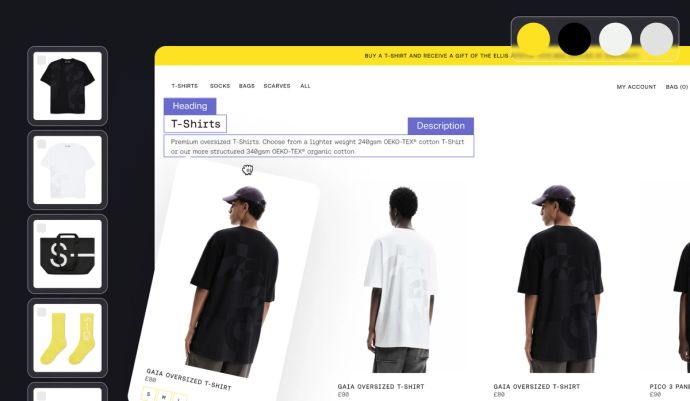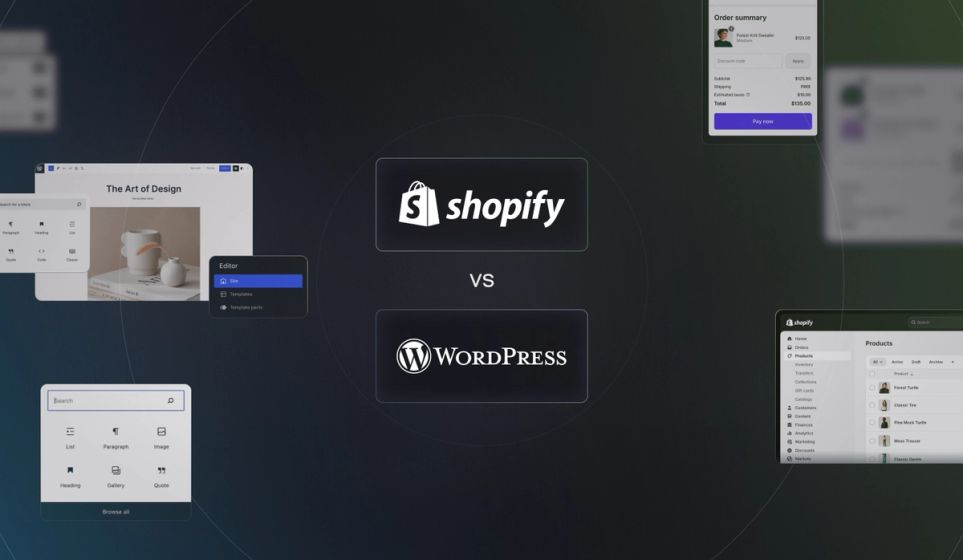
We moved Somewhere Good from headless to a custom Shopify theme. Here’s what changed and why it matters for your brand.
Headless sounds great in theory: full flexibility, complete control, performance gains. In practice? For most growing brands though, it’s a maze of complexity, maintenance and dependency.
Somewhere Good—a clothing brand known for bold, graphic-led staples crafted from premium materials—learned that the hard way.
“We started out headless—lured by the promise of flexibility and performance—but quickly ran into all the usual pain points: rising dev costs, slow turnaround times.” – Somewhere Good
They came to us stuck in a setup they couldn’t manage. Every small update needed a developer. Nothing moved fast. So we rebuilt their site on Shopify—properly. Custom theme, intuitive tools, zero dev bottlenecks.
Here’s what we fixed, what changed and what to know before you go headless.
When your team can’t touch your site, that’s a problem
The reality of headless
Somewhere Good had a sleek frontend. But they couldn’t:
- Edit their SEO
- Swap products on the homepage
- Change returns info
- Launch popups
Everything was hard-coded or buried in a CMS. Marketing ideas stalled while they waited on dev availability.
“A site that made simple updates a chore. For a start-up, it was unsustainable.”
What changed with Shopify
We gave them full control—without the code:
- SEO fields editable in the admin
- Homepage content updatable in seconds
- App changes that don’t need developer support
- Popups targeted by location and Klaviyo list
UK visitor? They see a 20% promo. EU visitor? A shipping update. All set up by the client, not us.
A headless stack is a lot to carry
The setup
- Shopify backend
- React frontend (or in this case, Svelte)
- Contentful or Sanity CMS
- Hosting, deployment, APIs
- Constant dev oversight
If you’re not a dev-led company, that gets expensive. Fast.
What we built instead
A streamlined Shopify theme. No plugins duct-taped together. No guesswork.
- Content and commerce in one place
- Built-in SEO and performance features
- Apps that actually plug and play
- A site that’s easy to manage—and hard to break
Now their team can focus on the experience, not the architecture.
Headless doesn’t guarantee speed—or visibility
The gaps
Somewhere Good’s headless build looked slick, but behind the scenes:
- No page titles or meta descriptions
- No schema or sitemap
- JavaScript-heavy pages that slowed load time and blocked indexing
Fixing it would’ve meant custom code and long-term dev cost.
Shopify sorted it
We rebuilt everything with:
- Semantic HTML and clean URLs
- Editable SEO fields
- Schema built in
- Faster, lighter pages
Now they’re in control of how the site performs—and how it shows up in search.
If you can’t test apps without code, you’re stuck
Before
They were locked into a single returns provider—not by choice, but because the content couldn’t be changed. Same with popups. Same with policies. Even testing a new tool was a dev project.
After
Now they can:
- Add or swap apps anytime
- Update content directly
- Tailor popups by location or list
- Move fast without breaking things
“Moving to Shopify and working with S8 has given us reliability, speed and freedom to focus on the business, not the backend.”
So... is headless ever worth it?
It can be. If you’re running multiple channels or serving custom user journeys—it might make sense.
But if what you actually need is control, flexibility and speed—without the technical baggage—Shopify isn’t just easier. It’s smarter. It gives your team the tools to move fast, test ideas and grow on your terms.
Somewhere Good made the switch. Now their site works harder so they don’t have to—with a platform that powers their growth, not their to-do list.
Stuck in a headless build that’s slowing you down? We specialise in smart, seamless migrations to Shopify—cutting the complexity, keeping what works and giving you a site your team can actually run with.


